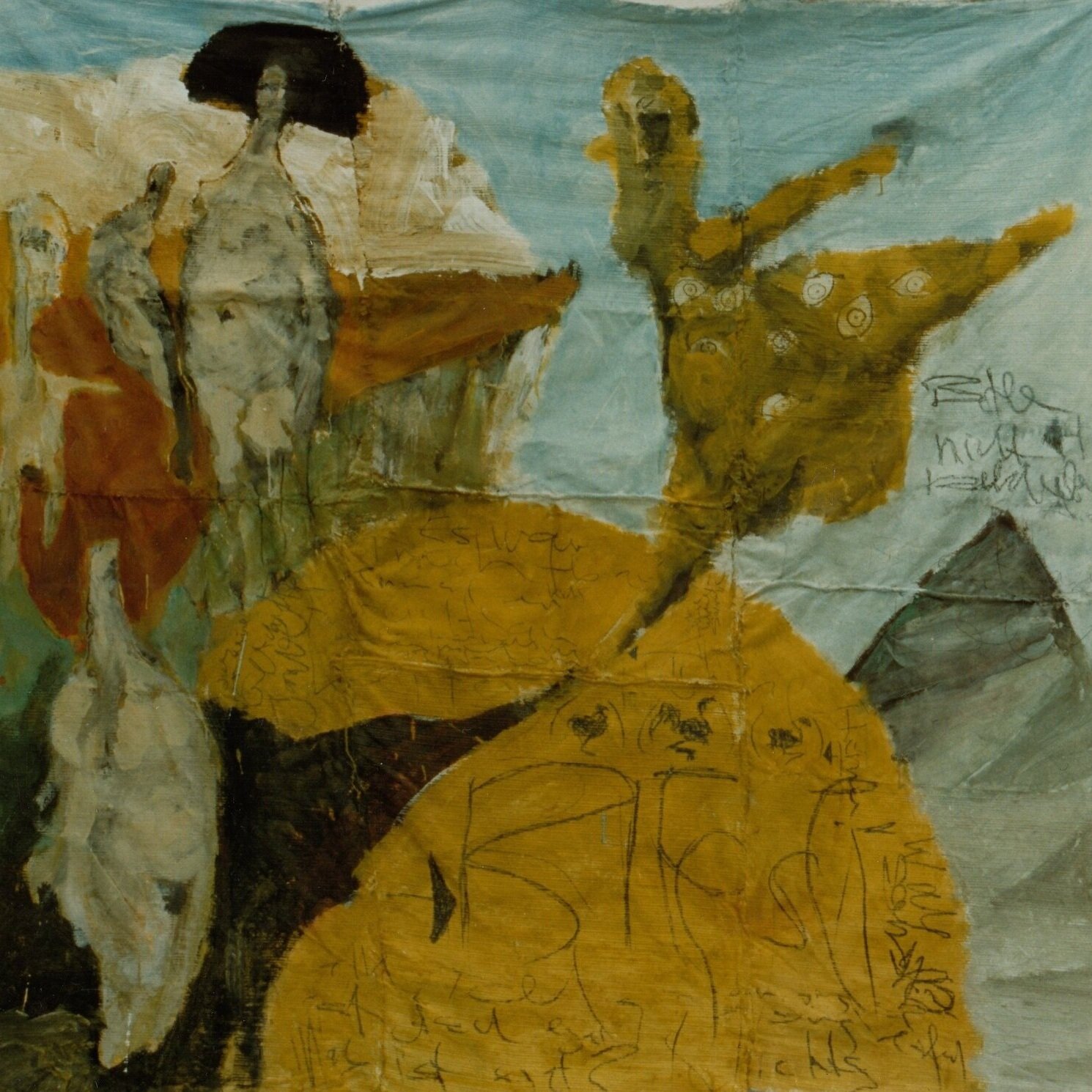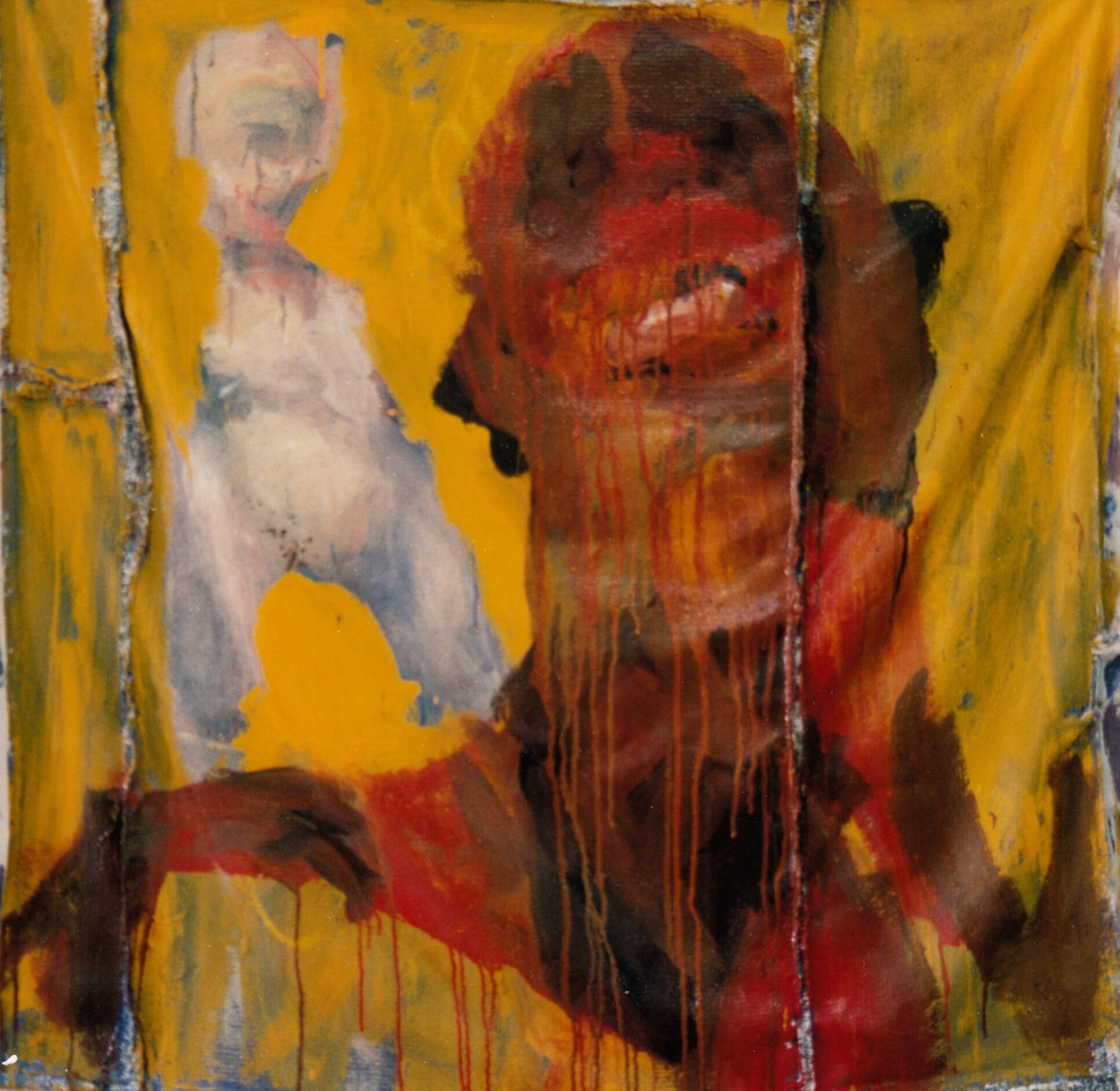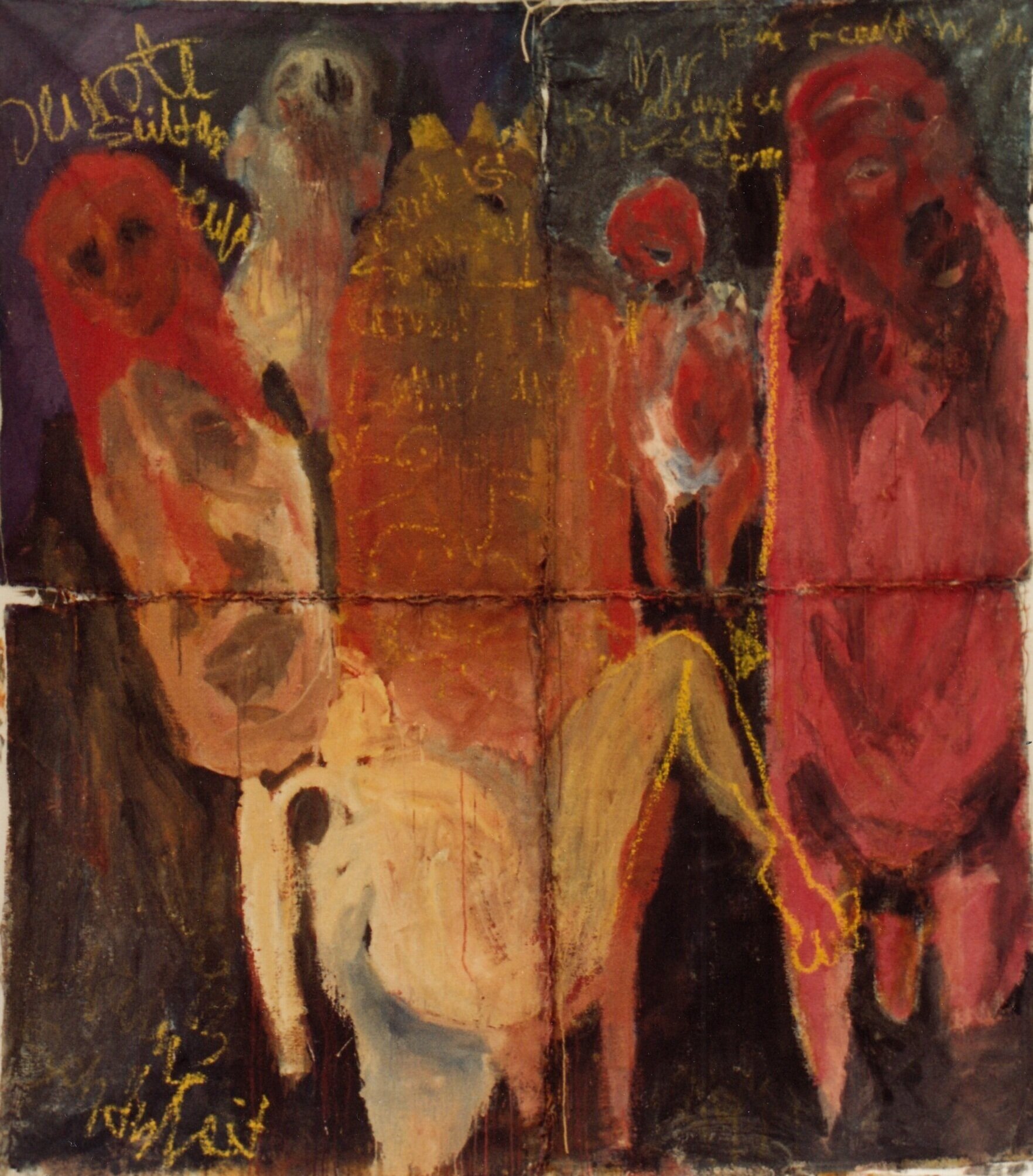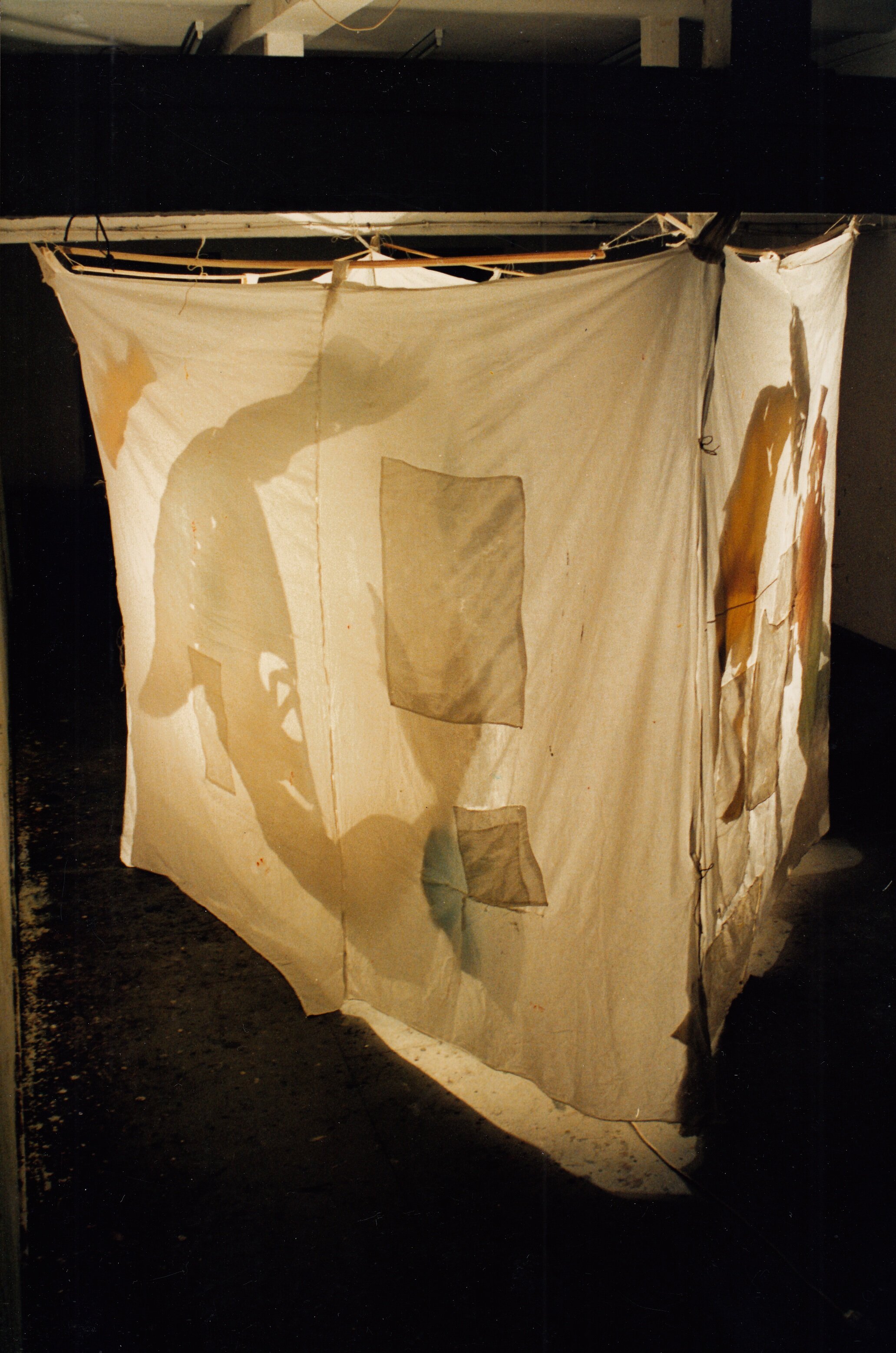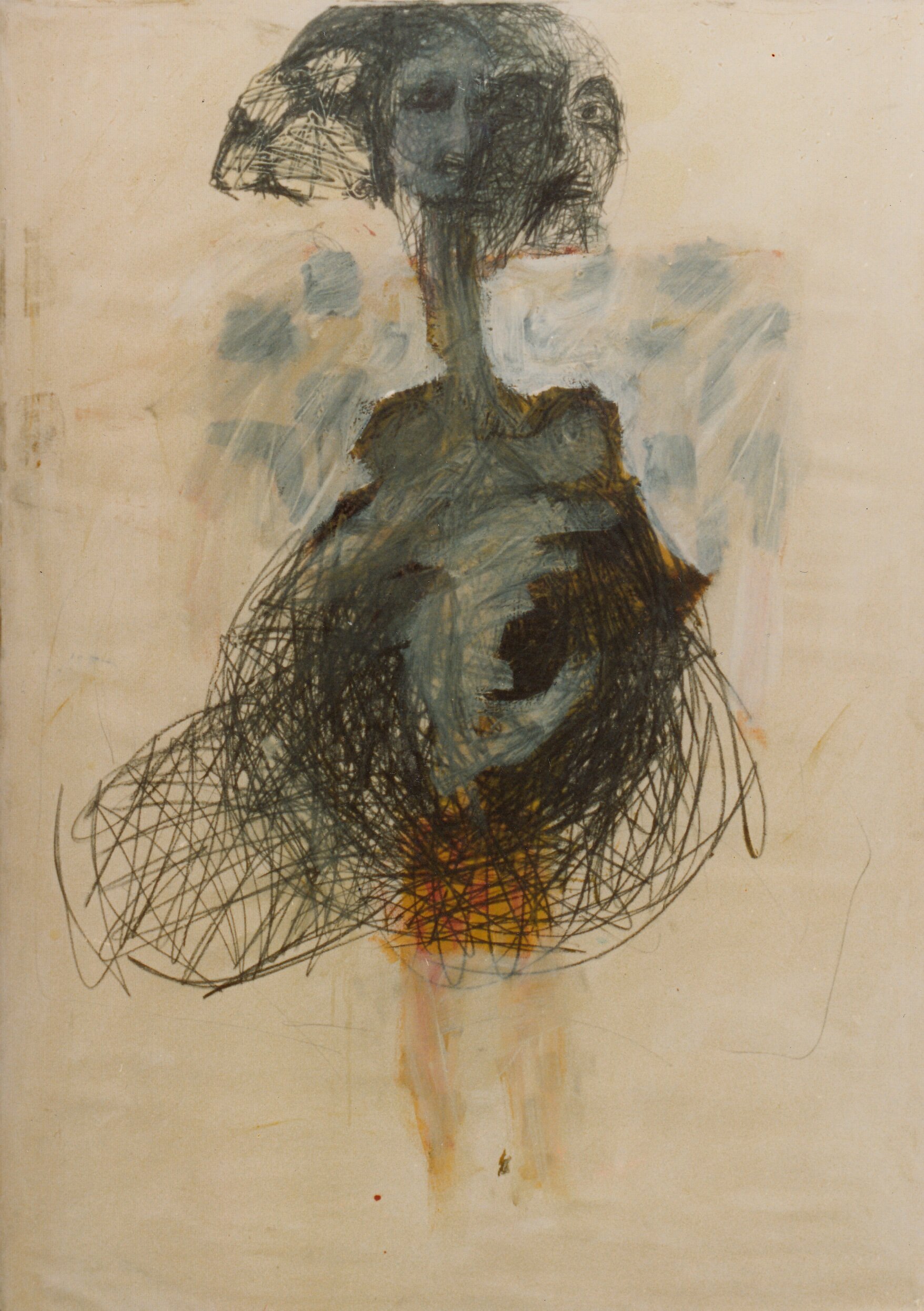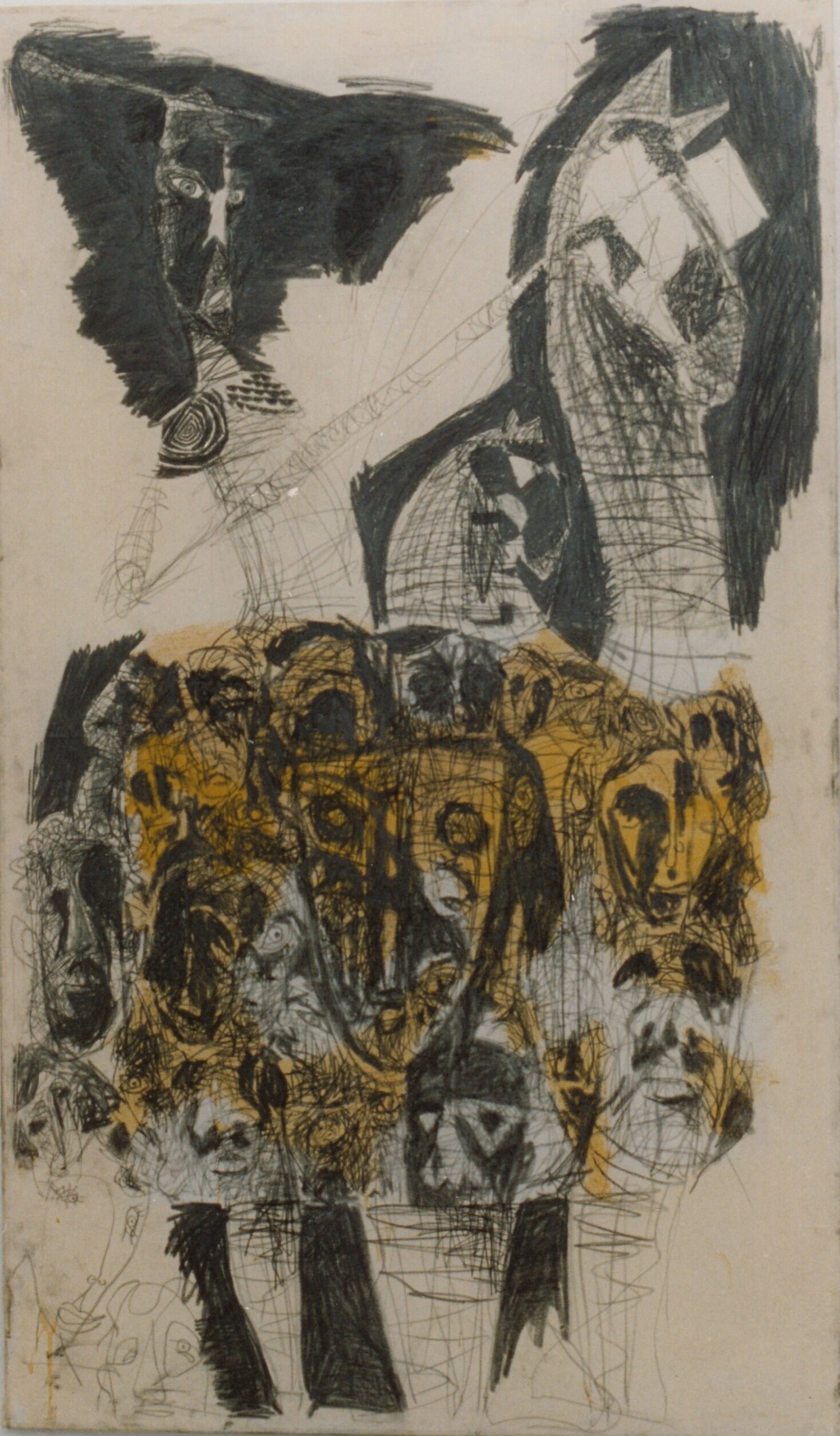Interview
Joas Nebe
Joas Nebe, who holds degrees in psychology and literature, is a self taught artist, born in Hamburg but now located in South Germany. After a few years in Berlin he decided to move south, close to the French and Swiss border.
Could you tell us a little about yourself? How did you start your journey in the art world?
“I am Joas Nebe from Germany, and I am an analog and digital artist. I began my career with painting, printmaking, drawing and other analog techniques. I used to paint large figures and groups of mostly naked people of all colors on huge canvases. Some figures seemed to come from mythology; others are like people I have been watching on the street of my birth town, Hamburg. Hamburg is a harbor city, and because of the harbor, the population is quite diverse. People from all nations live there. These people I pictured in my paintings, even the ones who live on the streets.
Moreover I started making very unique light sculptures, a theatre of lighting so to say, which I called Houses of Shades (a blend of sculpture & film-making). I was influenced by the shadow theatre of Indonesia, Turkey and the Near East, which are based on light. This led to my works having a film-like quality, because light is the essential element of working with projections, which is the basics of video, film etc… Ephemeral and fading.
I built two Shade Houses, which are illuminated from the inside and cast shadows on the outside, which is visible to the audience. The first House of Shades showcased card box figures, illuminated from the inside. The second one was made of wire and painted paper, so the shadow figures are colored, looking bright and colorful from the outside.”
What inspires you to do what you do?
“I am inspired by the people on the street in big cities, where I used to live. They are still part of my work as much as urban architecture influences my work, especially my video work. I started with lens based work after creating the House of Shades. It was a natural development, because both art formats are based on light; light, together with absence of light (shade), creates the visual world for our eyes. So working with light and shade reflects on our visual perception system, our eyes.
Working with movement is working with life itself, because life is movement from place A to B, from birth to death, from beauty to ugliness, from form to non-form. That’s what is inspiring me today, next to language (visual, verbal, body). Language, like life, is movement, because the visual/spoken message is based on time and is developed through time. A message needs time to be produced and needs time to be received. Like life in general, language/communication is time-based.”
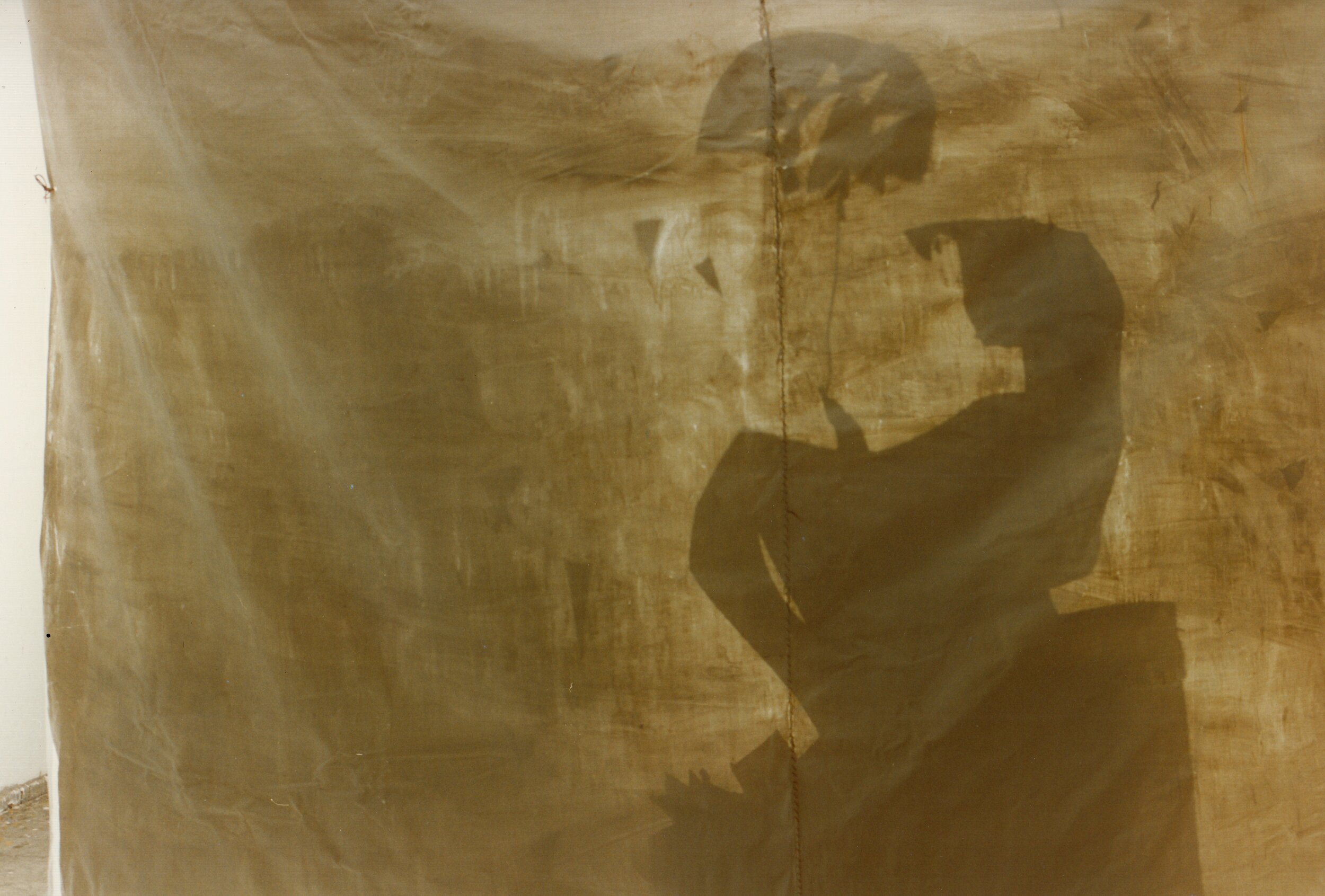
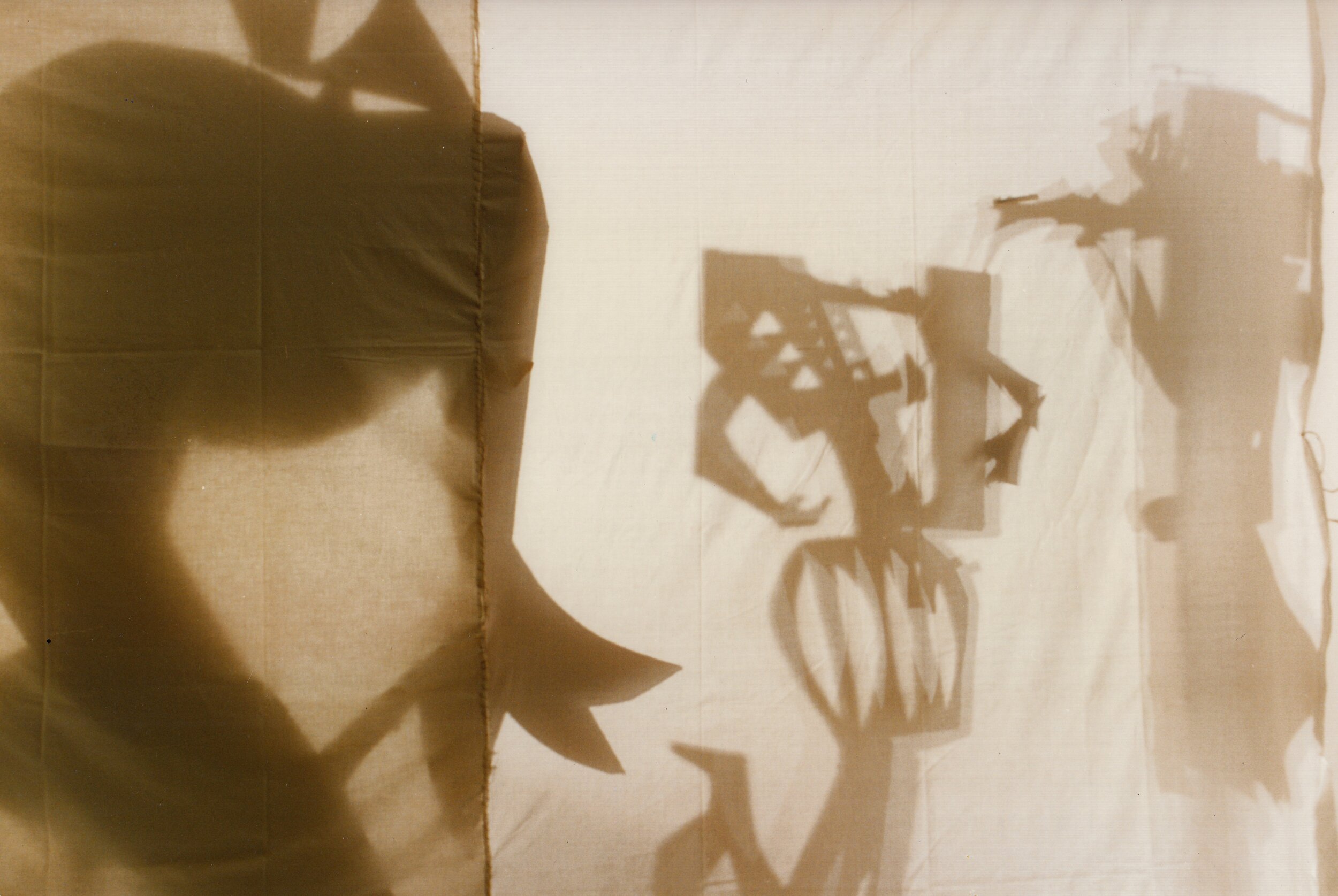
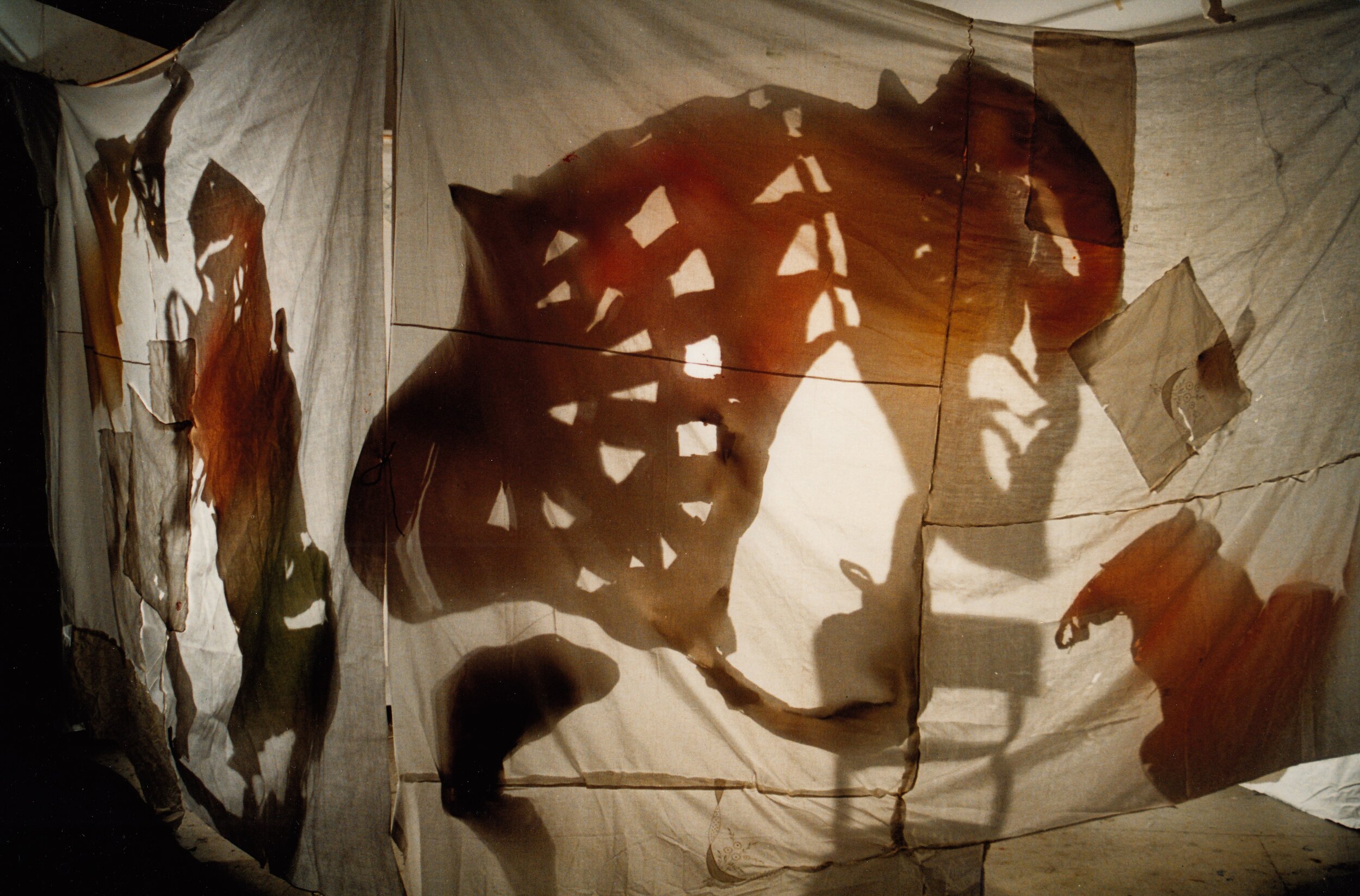
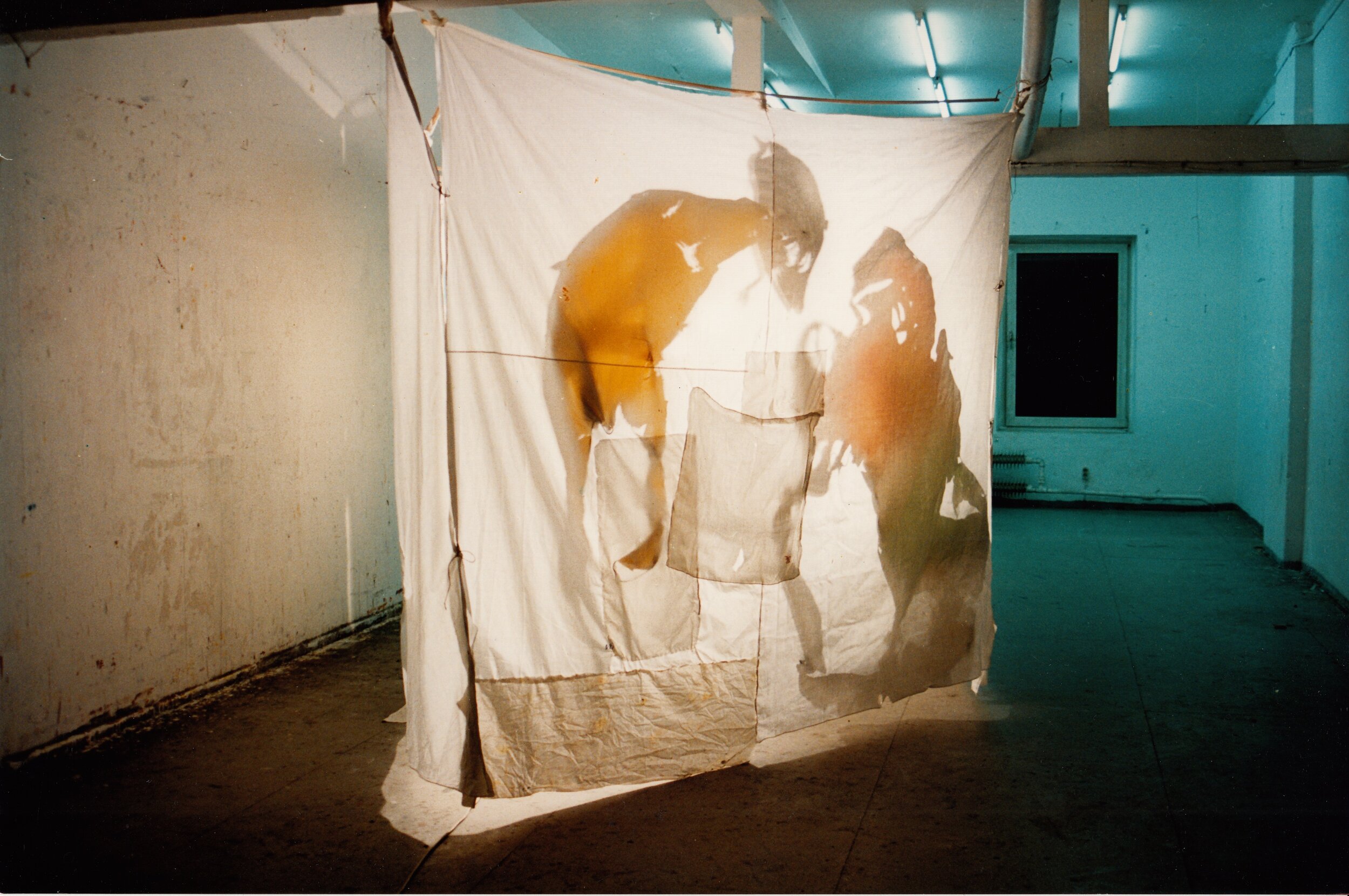
What themes do you pursue? Is there an underlying message in your work?
“One of my main interests today is communication and how communication between humans of the same/different gender/race/origin etc.. is shaped by ideologies around how communication is determined. In human evolution, language comes into being for making the other understand one's own position. Later, humans developed habits of mind called ideologies, like the fascist’s or communist’s thought patterns. Even some religious sectarianism turns grammar and words into a killing tool by dividing humans into followers and enemies. Crucial to an ideologist’s abuse of grammar is turning it’s communication function into an order message system. This form of ideology is one way communication and language can be used to mark the orders which are essential to the progress of revolution, riot and mass killing - justified by the thought pattern of the “righteous few”. This is the point where ideologist’s abuse of words meets with that of organized crime. That’s why I called one of my video work series on language “The Grammar serial/Gangland”.
Words tend to be more abstract. Images seem to tell us “we get what we buy”. But this is not true. Images are as highly manipulative as words. They follow grammar rules as words do and the rules behind them have a great impact on what we think we see in them. And “the grammar of images” allows an even deeper impact of the behind-the-image thought pattern on the viewer's mind.”
“Nowadays language is not only the language of words but the language of images. There is no difference between words and images, the grammar of language and the grammar of photography or movies.”
How would you describe your work?
“My work is very hybrid, because I am not following one style. In my video work I developed a series about rooms, the places we use to spend a lot of time, e.g. our own space, the working place, the café, restaurant etc.. Rooms are essential to our style of living, because we need a certain degree of infrastructure to live and work. We need Wi-Fi for being on the web. We need electricity in order to keep us informed (the TV set, notebook, tablet..). We are used to a certain degree of luxury in our life, e.g. the toilet, running water for showers etc..
Even if we are going on an adventure to explore nature, we prefer taking a certain kind of luxury with us, incorporated in a mobile home, a recreational vehicle, trailers.
In all these kinds of ‘rooms’ there are expectations that are inscribed, like being on an adventurous tour, experiencing pure nature, but having all possible luxury which is an essential part of Western culture. Even the memories of our small apartment next to the upper line of the New York Subway, which disturbs our sleep by passing by every 5 minutes…
On the other hand I am still working with analog formats like painting and drawing in which I am investigating the diverse human nature, our relationship to each other, our expectations and how they shape the way we receive these other elements.”
Can you tell us more about your creative process?
“Having an idea, then collecting information about the theme in literature (philosophy, library studies, tv, web, social media, newspaper etc.), developing mental connections between what I have been working on and what the issue is of my latest theme. It all starts from the artist's mind and his/her knowledge, the cognition of issues an artist is working on during his career and the new item which interests them most.
After collecting the necessary information, after researching the archives about what has already been written and said about the new issue, I start sketching the interpretation of the issue in different formats. Then I decide about which format fits best and I develop a kind of ‘screen book’, even if I don't work with lens based media. Lastly, I collect accessories or scenes, footage which is best suitable to what I want to say and what is written down in the ‘screen book. I then start working on the artwork itself.”
“The materials I use are dependent on the format I decide to use. For video works I am looking for footage that fits and which I shoot mainly on the streets or in nature. For color inks and shellac paintings on paper I use brushes of different sizes, my fingers, even rain that destroys the expected outcome of color. I leave the paper leaf out in the rain and let the drops do their work.
For building light sculptures like the Houses of Shades, I use mainly used bedsheets, painted with diluted wall paint, which allows the light rays to shine through. I do cut the figures out of card box material or I glue translucent paper on wires, formed in the shape of figures I want to display. After that I paint them with water color in the colors I like.”
Which artists influence you most?
“Jean Luc Godard’s ‘WEEKEND’, a film about an endless disaster caused by the motorized bourgeois people in France, who insist on having their free weekend outside of Paris, causing uncountable accidents all around.
Quentin Tarantino’s ‘Pulp Fiction’, a movie about how dime novels changed the world of the US in the 1990´s.
Jonas Mekkas’s ‘Diary’, a 16mm film document of his life in the US in a nearly surrealist way of using his Bolex at all possible occasions, even spelling his name in different languages in the 1970s.
Tchecow writes about an unmoving sense, always being fixed to the ground where the protagonists used to live, the province. They never would be able or even willing to leave for Moscow because of their lack of intent, although Moscow is the goal of their dreams. The big dilemma, the unexplained hiatus. The opposite of movement and development. The opposite of making movies.
Another source is the enigmatic author Luis Borges, the inventor of the sealed library, which is invisible, the end of the world. ‘The Labyrinth’ is about a person, who gets lost in the endlessness of a library, like climbing Mount Everest upon the death zone close to midnight, without any expectation to go back before sun rises and temperatures rise to livable conditions.”
Notable previous exhibitions:
Important exhibits include the artist’s “Climate Change Cartoons” on display at the “Letters from the Sky” exhibition, which accompanied the Durban UN conference on Climate Change 2011 in South Africa and “Machine Fair”- a film about the mechanical site of a metropolis - shown at Museum of Modern Art, Moscow as part of “Now&After”, screening in 2012. Other film works have been shown at the 25th Festival Les Instants Video (Biblioteca Alexandrina, Cairo), Videoformes Festival 2014 and 2015, Sustain Our Africa, Madatac 3, 4, 5, 6 Competitive Official International Selection (Madrid), Papy Gyros Nights 2016 Hong Kong/ART_TECTURE, In 24hours: Future Visions (SHIFT:ibpcpa) 2020, just to name a few.
Website: www.jsnebe.de
Instagram: @joas.nebe


